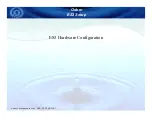
20
USER’S
MANUAL
About the MPD
2
Release Handle
2
Parking Brake
4
Rigging the MPD
4
Securing the MPD
7
Using the MPD
as a Descent Control Device
8
To Lower
8
To Stop Lowering
11
Using the MPD as a Belay Device
12
Belaying a Lowering System
12
Belaying a Raising System
15
Mirrored Systems
15
Using the MPD in a
Mechanical Advantage System
16
Additional Information
17
High Lines and Guiding Lines
17
Care and Maintenance
17
Inspection and Repair
18
Specifi cations
19
Quick Reference Guide
20
REFERENCE GUIDE
V2.1
Safety/Rigging
1. Read and refer to this manual.
2. Tug on load end of rope to verify correct rigging before use.
3. Lock Parking Brake when MPD not under load.
4. Lock Parking Brake and tie off MPD when left unattended.
Descent/Lowering
1. Hold rope fi rmly back against Fixed Brake V-Groove, maintaining
“S-shaped” bend in rope.
2. Add Secondary Friction Post for heavy loads.
3. Unlock Parking Brake.
4. Pull and turn Release Handle (full open).
5. Control speed with friction on Fixed Brake V-Groove.
Belay – Edge Transition
1. Hold load end of rope hand tight.
2. Unlock Parking Brake.
3. Feed running end of rope into MPD.
4. Maintain fi rm grip on running end to activate belay!
Belay – Shared Tension Systems
1. Hold rope fi rmly back against Fixed Brake V-Groove, maintaining
“S-shaped” bend in rope.
2. Unlock Parking Brake.
3. Pull and turn Release Handle (full open).
4. Control tension with friction on Fixed Brake V-Groove.
5. Let go of Release Handle immediately to activate belay!
M/A System
1. Rig running end of rope through additional pulley(s).
2. Attach moving pulley to rope with rope grab.
3. Unlock Parking Brake.
4. Pull rope through M/A system.
5. MPD will hold rope during reset.
1
Pulley
l
Rescue Belay
l
Descent Control
MULTI-PURPOSE DEVICE
WARNING
°
Serious injury or death may result from the improper use of this equipment.
°
This equipment has been designed and manufactured for use by experienced
professionals only.
°
Do not attempt to use this equipment without proper training.
°
Failure to follow these instructions could result in serious injury or death.
THIS DEVICE MEETS THE AUXILIARY EQUIPMENT (DESCENT
CONTROL AND PULLEY) REQUIREMENTS OF NFPA 1983,
STANDARD ON LIFE SAFETY ROPE AND EQUIPMENT FOR
EMERGENCY SERVICES, 2012 EDITION. EMERGENCY SERVICES
AUXILIARY EQUIPMENT IN ACCORDANCE WITH NFPA 1983-2012.
THIS MPD HAS PASSED THE MINIMUM BREAKING STRENGTH
AND HOLDING LOAD TEST USING THE FOLLOWING ROPE:
NEW ENGLAND ROPES, KMIII, CMC ITEM K05160, 13 mm OR
NEW ENGLAND ROPES, KMIII, CMC ITEM K05140, 11 mm
(AS APPLICABLE).
(KMIII used for certifi cation. For information on performance with other life safety
ropes, please contact CMC Rescue).
Thank you for selecting the CMC Rescue MPD™ for your technical rope
rescue systems. Truly a multi-purpose device, the fl exibility and versatility
of the MPD reduces the number of components in a rescue system and
simplifi es system rigging. The result is a safer and more effi cient rescue.
Please contact Customer Support if you have questions about this, or any
other CMC Rescue product.
MADE IN THE USA
(of US and foreign components).
The most current version of the MPD User’s Manual can be downloaded
at
cmcrescue.com/mpd
.
ISO 9001: 2008 Certifi ed
©2013 CMC Rescue, Inc. All Rights Reserved.
g the CMC
r selectin
Thank you f






























